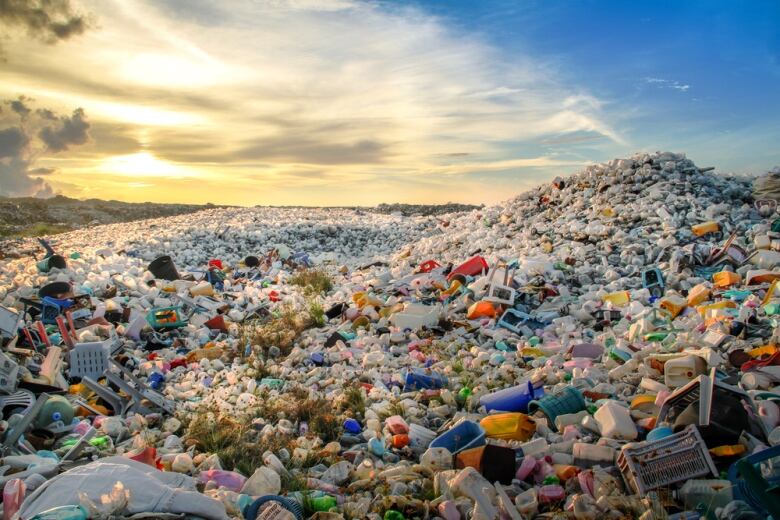Scientists make plastic from carbon dioxide and sugar
Conventional plastic takes centuries to break down, this one takes just weeks

Imagine a world without landfills and water systems clogged with plastic waste.
Researchers from the University of Bath in the United Kingdom have moved a step closer in trying to make that a reality, by creating plastic out of carbon dioxide (CO2) and sugar — natural sources that can take weeks to break down, instead of the hundreds of years it takes for today's common synthetic plastics to degrade.
Antoine Buchard, co-author of a study that appears in the journal Polymer Chemistry, says scientists play a key role in finding better ways to dispose of materials that can harm the environment. Work by Buchard and his colleagues augments other studies that have also focused on creating greener plastics.
"It's our job as scientists to address this type of problem," Buchard told CBC. "We need to have science and technology to sustain our modern way of living."
- Microplastics found in supermarket fish, shellfish
- Oceans Day campaign raises awareness of large amount of plastic in world's oceans

That's because plastic is made from polymers — chemical compounds with molecules bound together in repeating chains that are tough to break down.
Polyethylene terephthalate (PET) is one of the most common forms of plastic, found in items including water bottles, containers, ropes and combs.
As part of the Bath scientists' research, they collected sugar, combined it in a solution with carbon dioxide at low pressure and an ambient temperature. They then added certain chemicals to bind the CO2 with the sugar.
"What you get at the end is a monomer [a type of molecule], the monomer being the building block that's going to make the polymer," Buchard said. "Basically we've done two things: we've developed a method that makes this building block, but we've also shown that this building block, this monomer, we can polymerize it and transfer it into a plastic."
This biodegradable plastic created by the Bath researchers breaks down in water with basic properties (not the type we drink which is neutral) leaving the carbon dioxide and sugar used to make it in the first place.
The researchers hope that one day the resulting organic waste can be recollected to be used again to make more plastic, minimizing the carbon footprint.
Challenges ahead
The researchers stress that more work needs to be done before the plastic they created is as durable and cost effective as today's standard synthetic plastics, making it more likely to be accepted by manufacturers for use in everyday items.
"We are at this stage that we've developed the process to make the material," said Buchard. "What we're looking at right now is, make more of it, test it mechanically, look at durability, toughness to impact."

More research also needs to go into the type of compounds they used in their work.
For instance, tosyl choride is an organic compound that's commonly used in laboratories and is relatively inexpensive, but it's not perfect because it's a fossil fuel resource that countries are trying to move away from for environmental reasons.